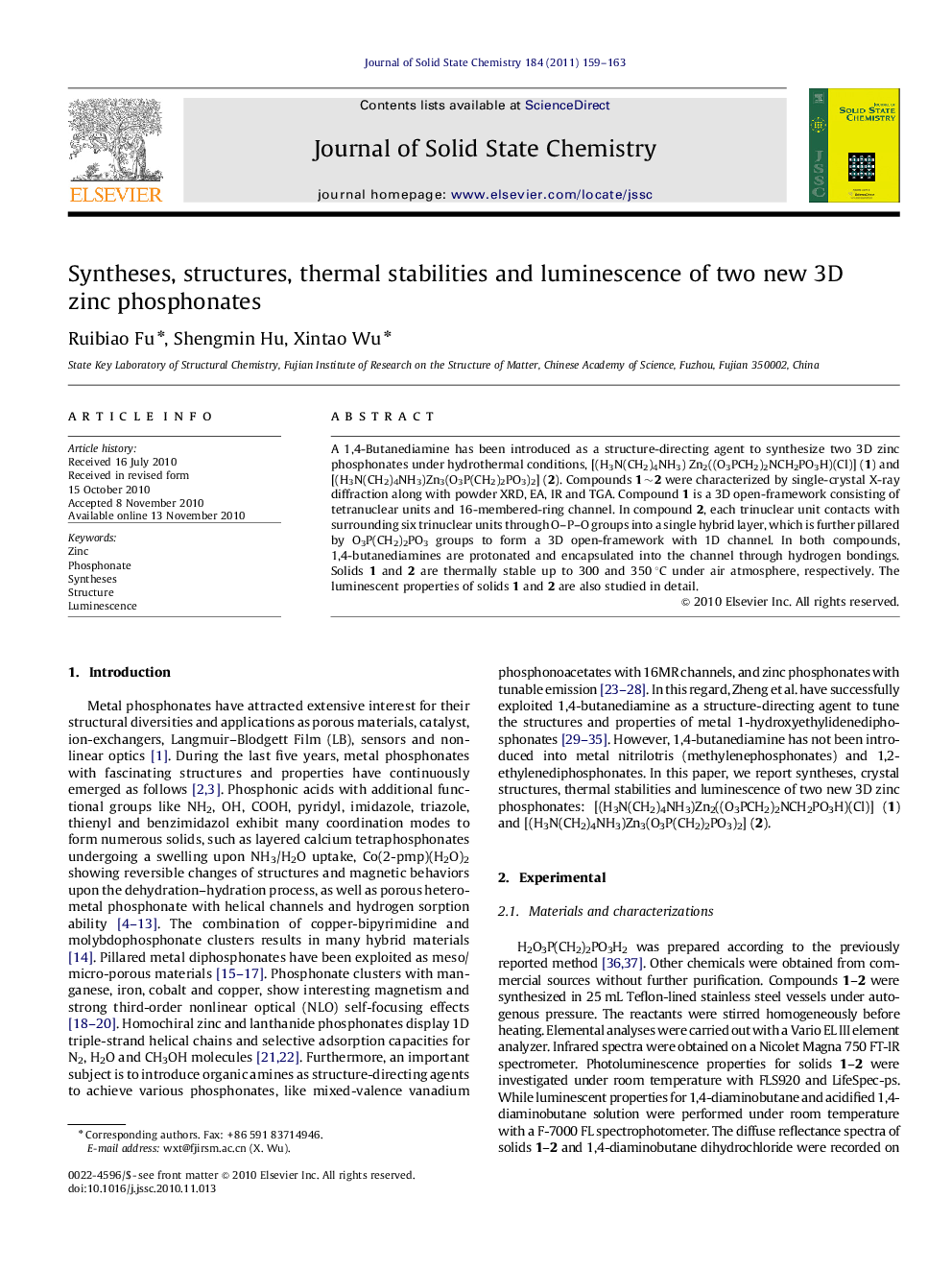| Article ID | Journal | Published Year | Pages | File Type |
|---|---|---|---|---|
| 1332226 | Journal of Solid State Chemistry | 2011 | 5 Pages |
A 1,4-Butanediamine has been introduced as a structure-directing agent to synthesize two 3D zinc phosphonates under hydrothermal conditions, [(H3N(CH2)4NH3) Zn2((O3PCH2)2NCH2PO3H)(Cl)] (1) and [(H3N(CH2)4NH3)Zn3(O3P(CH2)2PO3)2] (2). Compounds 1∼2 were characterized by single-crystal X-ray diffraction along with powder XRD, EA, IR and TGA. Compound 1 is a 3D open-framework consisting of tetranuclear units and 16-membered-ring channel. In compound 2, each trinuclear unit contacts with surrounding six trinuclear units through O–P–O groups into a single hybrid layer, which is further pillared by O3P(CH2)2PO3 groups to form a 3D open-framework with 1D channel. In both compounds, 1,4-butanediamines are protonated and encapsulated into the channel through hydrogen bondings. Solids 1 and 2 are thermally stable up to 300 and 350 °C under air atmosphere, respectively. The luminescent properties of solids 1 and 2 are also studied in detail.
Graphical abstractTwo new zinc phosphonates with 3D open-framework consisting of 1D channels and blue or purple emission behave thermally stable up to 300 and 350 °C under air atmosphere, respectively.Figure optionsDownload full-size imageDownload as PowerPoint slideResearch highlights► Zinc phosphonates are 3D open-framework with 1D channels. ► Zinc phosphonates display blue and purple emissions. ► Zinc phosphonates are stable up to 300 and 350 °C under air atmosphere.
